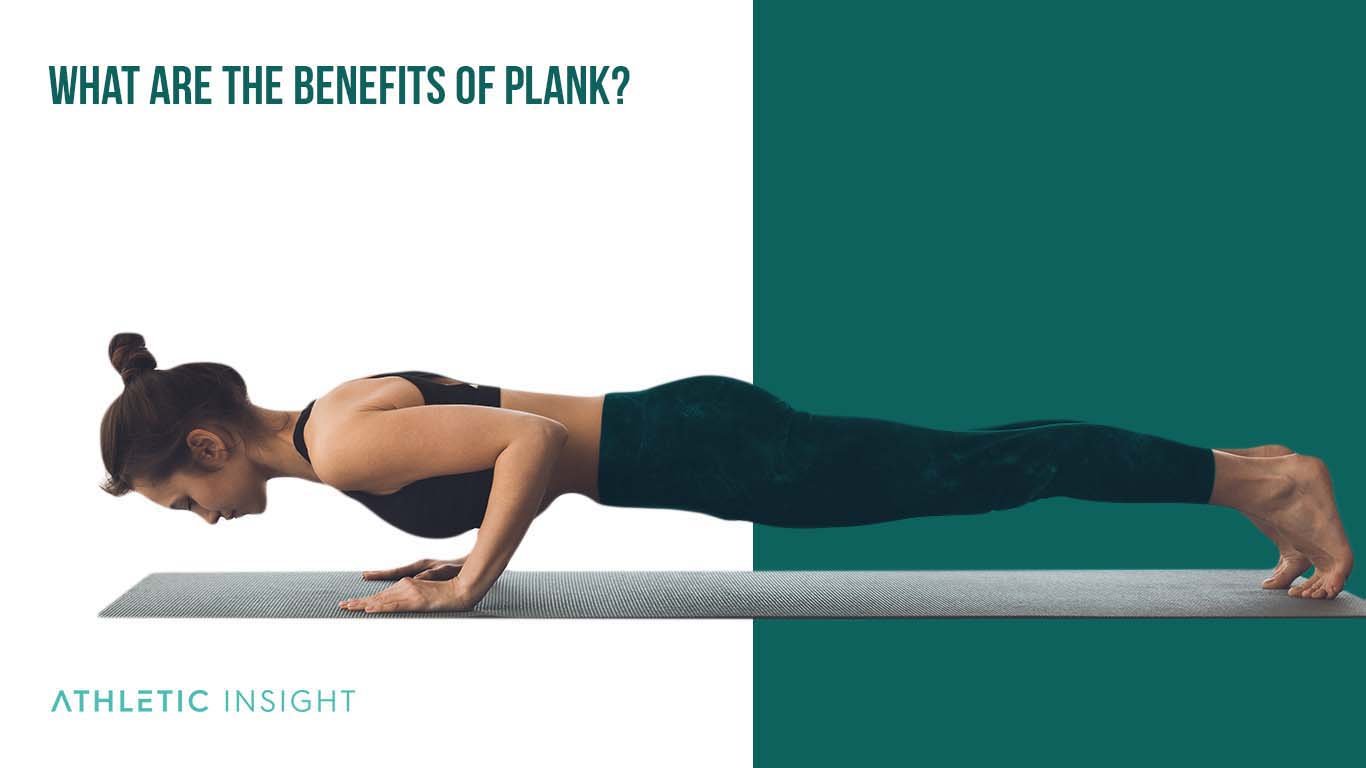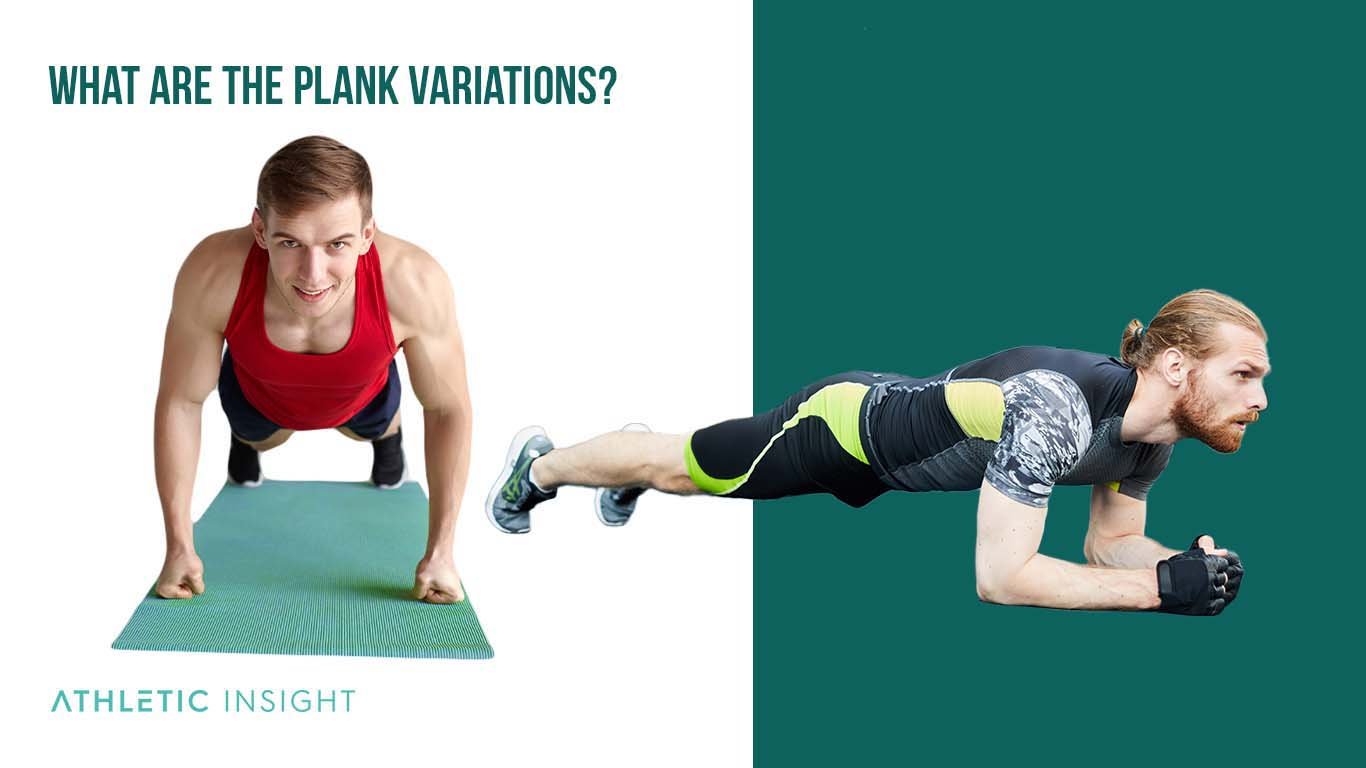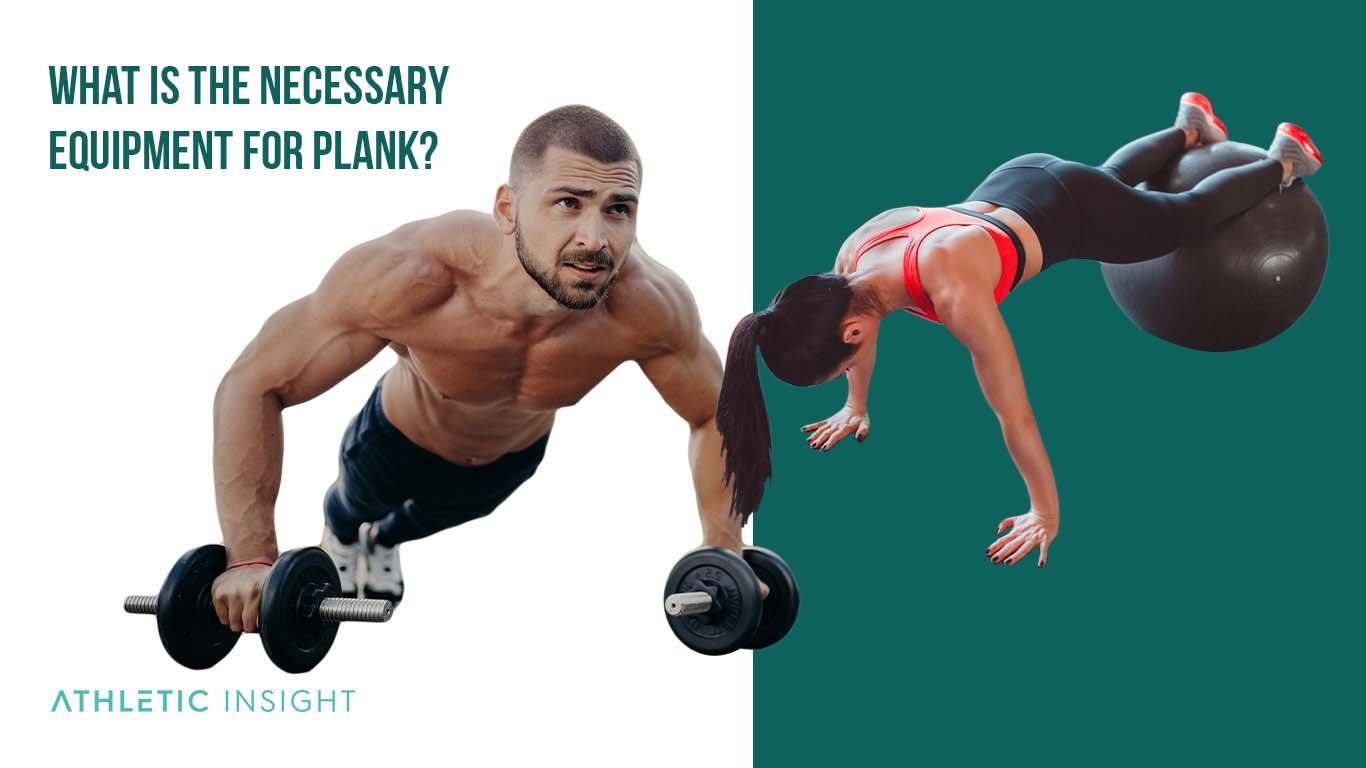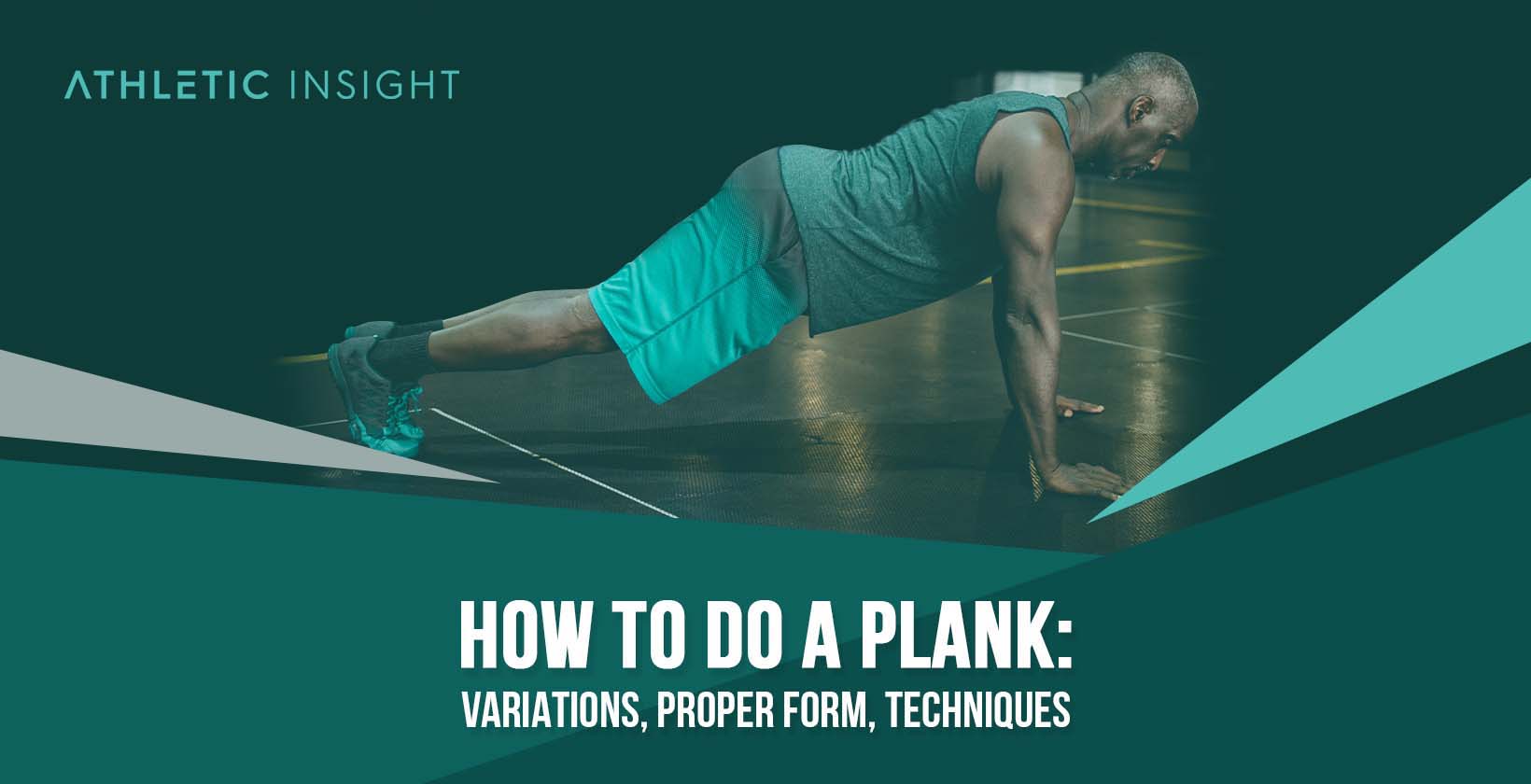A plank is a core strength exercise that targets your rectus abdominis, the long muscle that extends from the top to the bottom of your torso. However, the plank for core exercise works more than abdominal muscles. For example, they activate your external and internal oblique muscles, and transversus abdominis, a muscle layer below the rectus abdominis and obliques.
The many benefits of the plank include muscle activation in the upper thigh, back, arms, chest, and shoulders. Proper plank form means maintaining a straight line by looking down at the floor, tucking your toes, lifting your hips, and arms vertical and directly below your shoulders.
The main plank mistakes are arching your back or lowering your hips during the plank position. These common mistakes result in an undue force on your arms, lower back strain, and reduced activation of core muscles.
Common injuries include rib and shoulder joint pain, with lower back pain being the primary culprit. These injuries can be avoided by maintaining proper form during a plank, and ensuring you’re not overdoing plank exercise time.
There are numerous fitness plank variations; we will focus on eight main plank exercises for beginners that target the core.
How To Perform Plank with Proper Form?
Proper plank form means your core, upper arm, shoulders, and legs must be engaged for maximum efficiency. An effective plank that requires less body weight support and shoulder stress is the knee plank. Here’s how to dominate the plank.
- Engage your core while you lay on the floor.
- Place your elbows under your shoulders.
- Slowly lift yourself from the floor.
- Maintain your forearms and knees on the floor.
- Maintain the position for as long as possible.
This is an excellent plank exercise for beginners. If you’re new to planking, make it a goal to master the proper form. Then, for the duration, try to hold the position for 30 seconds to one minute a set.
What Are the Benefits of Plank?
It’s important to understand the advantages of planks because they extend further than just a core enhancement exercise. While planks target your abs, the other muscles involved are considered stabilizers. For example, obliques, which sit on the sides of your waist, are stabilizers, meaning they support the primary muscle that planks target.

Additionally, other muscles in your back act as antagonist stabilizers, meaning they contract during a plank to assist in control and posture during the contraction of your abdominal muscles. Here are some other plank benefits.
- Fortify the skeletal system: The plank is a resistance exercise, which helps to fortify the skeletal system. Maximum skeletal benefits happen when, over time, resistance is progressively increased and performed more than twice a week.
- Enhance your posture: The abdominal muscles that planking exercises target control your pelvic tilt and spinal curvature, meaning planks improve and strengthen your posture.
- Dismiss back pain: While improper plank form exposes you to lower back pain, proper plank position can help prevent back pain. In addition, the same muscles that enhance your posture can also help relieve stress on your spine and back muscles. Since spinal instability causes recurrent lower back pain, planking helps strengthen these surrounding spinal muscles, reducing stress on the human body during everyday activities like standing.
- Improve core muscle for balance: A weak core leads to balance and stability issues. Planks strengthen your body by targeting the transverse abdominis to increase spinal stiffness, promoting better balance.
- Improve your flexibility: Planking exercises may not feel like you’re stretching anything; however, many who practice yoga know planking promotes flexibility. Planks not only strengthen the muscles around your shoulders, back, and chest, but they also expand and stretch them.
- Enhance your metabolism: The human body needs to burn more calories during any exercise regime to keep up. For example, planking requires you to burn more calories because the primary target contains some of the larger muscles in the human body. This requires a sufficient calorie intake to keep up with your body metabolizing faster.
- Improves mood: In general, any form of physical activity results in post-workout stress relief, and this is because physical activity promotes a faster metabolism, stress release, better immune response, and higher epinephrine, otherwise known as adrenaline.
What Are the Mistakes for Plank Form?
Here are eight common mistakes made in Plank form:
- Failing to engage all legs, arm, back, and core. All the muscles involved in a plank
- Pushing on the balls of feet rather than driving heels back
- Not flexing quads
- Not contracting abs
- Letting hips drag
- Pushing butt up
- Trying to hold a plank longer without good plank form
- Executing a knee plank as a substitute for an incline plank with a bench
In addition, sometimes most people make the other plank mistakes not listed above.
Which Muscles Are Involved While Performing Plank?
The 12 muscles involved while performing a plank are the following.
- Rectus Abdominis: The rectus abdominis, the large muscle that extends from the top to bottom of your torso, informally named the “six-pack” area, is the primary muscle targeted during planks. When engaging your core during a plank, the rectus abdominis strengthens to help improve posture.
- Obliques: External and internal obliques are the muscles located on your waist and hips. These muscles contract during a plank, making your hips toned. Stronger obliques can also help with lower back pain. Moreover, plank variations like plank hip dips and side planks target your obliques even more.
- Iliopsoas: Iliopsoas muscles consist of two muscles at the sides of your hips that facilitate the bending movement of your hips. Planking exercises help the iliopsoas stretch and fortify your skeletal system.
- Tensor Fasciae Latae: Located in the hip abductor/flexor region, Tensor Fasciae Latae also assists in the bending movements and abduction and internal rotation movements. This muscle contracts to support posture and reduce joint stress during planks.
- Quadriceps: Quadriceps are the large thigh muscles that consist of four individual muscles. They’re there to support physical activity that requires more strength, like running or jumping. During plank core exercises, your quads work to stabilize and maintain proper plank form.
- Sartorius: The sartorius is the longest muscle in the human body, located at the inner thigh. This muscle has two functions: a hip flexor and a knee flexor. Planks activate the sartorius, strengthening it and stabilizing your plank form.
- Pectoralis major: Pectoralis major takes a triangular shape on the chest. It is there to help with total arm rotation, abductions, and extensions. In addition, planking activates the use of your pectoralis to help stabilize your plank position.
- Serratus Anterior: The serratus anterior appears as a fan located on the sides of the first eight ribs. The serratus anterior, otherwise known as “boxer’s muscle,” is responsible for reaching or pushing objects. The serratus anterior helps to stabilize your plank position.
- Erector Spinae: The erector spinae accounts for your posture and side-to-side rotation. During a plank, the erector spinae is an antagonist stabilizer that contracts in unison with the primary stabilizers. A strong erector spinae can provide skeletal benefits.
- Trapezius Middle and Lower: The trapezius middle sits on the upper back, while the trapezius sits below it. These aid in the protraction (moving shoulders forward), retraction (bringing shoulder blades together and spreading them), elevation (raising shoulder blades), depression (lowering shoulder blades), and up-and-down arm rotation. Planks can help strengthen these muscles, naturally resulting in improved posture.
- Rhomboids: Rhomboids attach to the spine’s middle-back and are essential for upper limb movement and stability. During a plank, your rhomboids benefit because they help strengthen them, resulting in a more muscular back and better posture.
What Are the Plank Variations?
The variations of plank are different ways to perform a plank that sometimes provides more challenge than a basic knee plank and also puts more weight and focus on different muscles.

- Forearm Plank: Forearm planks put most of the bodyweight on your forearms. The forearm plank variation is like a full plank, except you hover closer to the ground and your elbows are directly below your shoulders.
- Forearm to Full Plank: The forearm to full plank is a variation of the forearm plank that offers a new challenge. The main feature is that you start in a forearm plank and move your arm one at a time to transition into a full plank.
- Side Plank: A side plank requires you to hold your body weight on one arm, with support from your leg muscles. To perform a side plank, you use one arm to maintain a straight diagonal line from your head to your toes. Additionally, your foot should stack on top of the bottom foot. For balance, try raising your free arm to make a straight line from one component to the other.
- Walking Plank: A walking plank follows the same plank position as a full arm plank, except, as the name implies, you’re walking – sideways. The main feature of the walking plank is to activate the muscles used in a plank while offering more of a challenge.
- Reverse Plank: In a reverse plank, you’re facing towards the ceiling, with your arms behind you. The reverse plank adds more challenge to the traditional plank and places more stress on your heels.
- Spider-Man’s Plank (Knee to Elbow): The spider-man plank adds a twist to the full/forearm plank by adding physical movement rather than holding the position for a timed duration. The main feature is bending a knee to its corresponding elbow and then back, requiring more core strength, balance, and endurance. You can perform the knee-to-elbow plank from a full plank or forearm plank.
- Plank with Alternating Knee to Elbow: The plank with an alternating knee to elbow variation follows a similar movement to the spider-man plank, except it requires you to twist your torso to get your knee to the opposite elbow. The alternating knee to elbow plank burns your abdominal and oblique muscles and requires considerable core strength to accomplish without wobbling.
- Plank with a Row: Plank with a row incorporates the use of bending your arms, in succession, up to your rib cage. The plank with a row variation is typically conducted with dumbbells; however, they’re not necessary to accomplish the movements.
- Plank Jacks: The plank jack is an active variation of the full plank. In full plank position, you lift your feet off the ground with a jump and land your feet out to the point where your legs stand wider than your shoulders. Then, jump your feet back into full plank mode.
- Plank with Shoulder Taps: Plank with shoulder taps requires less physical movement than plank jacks. However, they need a stable and robust core to accomplish them without swaying side-to-side. The plank with shoulder taps variation requires you to lift your arm and touch it to the opposite shoulder.
- Mountain Climbers: Mountain climbers are a great way to incorporate rapid movement into your planks. The mountain climber is a cardio-based plank variation that is great for beginners.
- Swiss Ball Jackknife: The swiss ball jackknife variation is a way to test your core stability. The variation has you place your shins on a medicine ball, with your arms straight and shoulder-width apart. From the starting position, you use your core to roll the ball towards your arms until your thighs contact your abdomen.
- Swiss Ball Pike: The swiss ball pike is a variation of the swiss ball jackknife that begins with the same starting form: shins on a medicine ball and arms shoulder-width apart. The difference is that you engage your core and lift your hips while moving the ball towards your arms. This variation stretches your hamstring and challenges your core strength and control.
- Burpees: Burpees are a full-body plank variation that incorporates squats, jumps, and push-ups. Core strength, lower-body, and upper-body strength are necessary to perform a burpee successfully.
What Is the Necessary Equipment for Plank?
The great thing about plank (exercise) is that you don’t need a gym membership to do them. To complete a forearm plank, full plank, knee plank, walking plank, and many other variations, the only thing you need is a soft surface. You will need dumbbells and a medicine ball for some exercises like the plank with row and the swiss ball variations.

What Are the Abs Muscle Exercises with Plank?
Here is a 10-minute workout program that emphasizes plank for abs:
- Full plank for 45 seconds
- Rest for 30 seconds
- Forearm plank for 45 seconds
- Rest for 30 seconds
- High to low plank for 45 seconds
- Side plank for 30 seconds
- Rest for 15 seconds
- Side plank (other side) 30 seconds
- Rest for 1 min
- Repeat steps 1-8
This abs workout is based around the basic form of the plank, with rests in between and variations like low and side plank.
What Are the Plank Related Facts?
Here are five plank-related facts.
- Planks exercise muscles isometrically, meaning the targeting muscles contract without movement.
- With proper form, holding a plank for 10 to 30 seconds is more beneficial than straining to hold the plank position for over two minutes.
- Skeletal benefits occur when an exercise targets the hips and spine muscles. For example, muscles like the erector spinae and the iliopsoas contract during a plank, which help improve skeletal benefits.
- Studies show a link between physical activity and lower mental health symptoms and cognitive functions by supplying more oxygen and energy to the brain.
- Doing only planks won’t improve your posture; other core-focused exercises or remembering to keep your shoulders back throughout the day will help.
Any physical activity; specifically, high-intensity exercise, induces positive benefits, like increased blood flow, serotonin, and dopamine. However, because they work nearly every muscle in the human body, planks can provide joint, posture, and stability benefits without high-intensity training.
Does Plank affect the hormones?
High-intensity plank variations like the walking plank, mountain climbers, plank with shoulder taps, plank jacks, spider-man plank, and burpees affect hormones. Those hormones include.
- Endorphins: Studies show that short-term exercising releases beta-endorphins and beta-lipotropin. These concentrations of endorphins alter mood, stress, menstrual cycles, and pain perception.
- Testosterone: Studies suggest that testosterone promotes muscle growth because the hormone increases muscle protein synthesis (MPS). For example, an experiment on rats showed that MPS decreases during a workout and rises after about 45-150 minutes of intense exercise, according to The Journal of Physiology. They also found that high-endurance exercise like running increases muscle protein synthesis, but there isn’t a link to increased muscle mass. The only way to achieve muscle mass is during post-workout. Some estimate that 20 grams of high-quality protein, after exercise, can produce maximum MPS response and lead to increased muscle mass. Human responses to protein after exercise depend on gender, age, and exercise mode.
- Cortisol: A hormone that promotes metabolism, stress, inflammatory, and immune response, and epinephrine, otherwise known as adrenaline, levels.
Is Plank a Compound Exercise?
Yes, a plank is a compound exercise because compound exercises are any physical activity that requires more than one more muscle group to perform the movement.
A plank is a compound exercise because it requires the contraction of your core, leg, arm, back, shoulder, and chest muscles. In other words, planking involves using essentially every muscle in the human body.
What Are The Alternative Plank Exercises?
Here are the alternative plank exercises.
- Twisting Hanging Leg Raise: The twisting hanging leg raise is a challenging ab-focused exercise that requires immense abdominal and upper-arm strength. One rep of the movement requires you to hang from a pull-up bar and lift your legs to your chest.
- Body Saw: The body saw is a twist on the forearm plank. Start in a forearm plank and sway your body back and forth by pressing through your feet and elbows.
- Straight Leg Sit Up with Twist: The straight leg sit-up with a twist requires a firm core to accomplish without a friend holding your feet down. This exercise works the abdominal muscles, lower back, and glutes.
- Swiss Ball Crunch with Twist: The swiss ball crunch with a twist requires a medicine ball. To do this exercise, rest your back on the ball, plant your feet firmly on the ground, and bend your arms behind your head. Then, tense your abs to move your upper body off the ball and towards one side.
- Oblique Kickbacks: Oblique kickbacks help tone your upper arms and work your core and glutes. To do an oblique kickback, start on your hands and knees, then raise one leg towards the ceiling while maintaining a solid core. To challenge yourself, try oblique kickbacks with a band.
- V Ups with Twist: V Ups with Twist have you lay flat on your back, with your arms extended. Then, by tensing your core, move your arms and legs towards each other while twisting your upper body to one side.
- Banded Scissor Kicks: Banded scissor kicks are great for your quads, core, and glutes. They are similar to flutter kicks, where you flutter your legs to promote abdominal tension. Banded scissor kicks add resistance to the exercise.
- Crunch Twist: A crunch twist has you lay face-up on a soft surface, with your knees bent and feet firmly planted. Then, by tensing your abs, push your upper body up while forcing it to go to one side.



